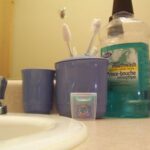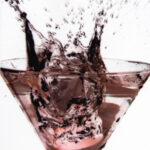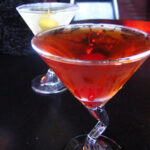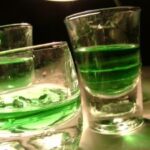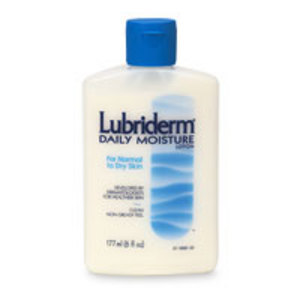A good bartender knows their drinks. Any seasoned bartender I ever interviewed can tell you that I would ask them the ingredients in a Martini and throw them for a loop with Little Purple Men (1 oz Sambuca, a licorice flavored liqueur, and 1 oz Chambord, a raspberry flavored liqueur). Many times, working bartenders, applying at my bar, could expect me to show up to their bar, order a drink (to test quality), and observe them while they work.
How do you go about learning hundreds of drink recipes? You study!
Breaking into the Bar Business: Learn the Recipes
The first thing you are given at a bartender school is a book, actually more of a pamphlet, of cocktail recipes. For the self-starter, go out and purchase a good drink recipe book and some index cards. If you want, find a good cocktail recipe Website and take the recipes from there to get started now.
I am sure you have used flash cards at some point in your life. You should make drink flash cards out of those index cards, about 100 to start. Write the recipe on one side and the drink name on the other. Quiz yourself until you have them memorized. Doing this will give you a good base knowledge of drink recipes.
I will tell you now that the majority of business in neighborhood bars will order beer, shots, well, or call drinks. Customers in nightclubs will order all of those in addition to fancier cocktails with silly names and shooters. Patrons to restaurant bars will order the same plus wine or house specialty drinks.
Your Starter Recipe List
Here is a list of drinks that I was most often asked to make. Keep in mind that this list is limited to 31 plus some variations. After you create flash cards for these, you should add to them by asking everyone you know to name 5 drinks until you have 100 different recipes.
B 52
B 54
B 57
Bay Breeze
Black Russian
Bloody Mary
Blue Hawaiian
Cosmopolitan
Daiquiri (several variations)
Grasshopper
Hurricane
Kamikaze
‘Lectric Lemonade
Lemon Drop
Long Island Ice Tea
Manhattan
Margarita (several variations)
Martini (several variations)
Melon Ball
Mimosa
Mind Eraser
Pink Lady
Sex on the Beach
Singapore Sling
Slippery Nipple
Sloe Gin Fizz
Stinger
Tom Collins
Tequila Sunrise
White Russian
Zombie
Note that I did not include drinks like Cuba Libra or 7 & 7 in this list. A Cuba Libra is a Rum and coke served with a lime. A 7 & 7 is Seagram’s 7 with 7-up.
The basic well or call drinks are simple and contain one liquor and a mixer or soda: Gin and Tonic, Bourbon and Coke, Scotch and Soda and so forth. Common single liquor juice drinks are Cape Cod (or Codder), which is Vodka and Cranberry juice, and the Screwdriver-Vodka and Orange juice.
Single liquor drinks are usually mixed and served in the same glass. The most common glass used for them is a rocks glass. These drinks are made by completely filling the glass with ice, adding 1, 1 ½, or 2 ounces of liquor and filling with the mixer. I used three different measures of liquor here because many bars have a house pour. The house pour can vary from 1-1 ½ ounces. Two ounces would be considered a double or double shot.
When mixing drinks always try to use both hands. Over time you should be able to pour your liquor and mixer at the same time for well drinks. Hold the liquor in your non-dominant hand and the soda gun or juice pourer in your dominant hand for better control. Time and practice will make you more comfortable and faster.
For cocktail recipes, the liquors are always poured first and followed by the flavorings. Recipes calling to be mixed in a shaker should be done by first filling the mixing glass full of ice. The ice chills the liquor. More ice keeps the liquor from watering down. You do not want to serve your customers watered down drinks, as it spoils the flavor.
Pouring Shots
Different bars have different pouring methods. Some bars have metered pourers, measured pourers, allow free pours (counted shots), or require you to use a measured jigger. Since there are so many variations, you should familiarize yourself with the free pour but be aware there are other methods.
You can learn how to count a shot, discover different mixing methods and see some of the tools of the trade in Bartender Basics for Holiday Parties.
Mixing up Multiples
If your bar is busy, your tip jar will be full in no time. You cannot be slow putting out the drinks. You must multi-task. When an order comes in think about what you are doing.
Say your customers want 2 buds, a Cuba Libra, a Vodka Tonic, and a Long Island Ice tea. For the order, you know you need two rocks glasses filled with ice; you need a tea or hurricane glass filled with ice. Pour your rum and coke first, then put ½ oz of rum in your tea glass. Next pour your vodka tonic, and put ½ oz of vodka in your tea glass.
Follow up with ½ oz each of gin, tequila, and triple sec in your tea glass. Top the tea with sour mix and a splash of coke. Teas are rolled so grab your tin mixer and start swapping the mix back and forth a time or two. Garnish the Cuba Libra and Gin and Tonic with a lime (Tonic drinks always get a lime). Put a lemon on your tea and all you need to grab are the beers.
I know it looks complicated in writing, but knowing the drinks makes the job easier.
When you are learning your recipes you should drill yourself until you have them down pat. If someone asks you the ingredients of a drink you should not hesitate. Like I said in the beginning, I always asked seasoned bartenders about recipes during interviews. You may come across a manager who follows the same practice.
Granted there are thousands of recipes and no one could possibly know them all. This is why you purchase the recipe book I mentioned in the beginning; you keep that with you behind the bar so you can cheat.
